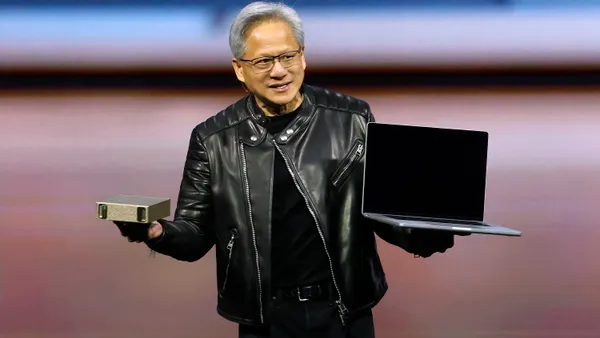WASHINGTON — Thinking about what humans can do creatively with computing is powerful, yet relatively new technologies take time to prove their value. Artificial intelligence, while applicable now, is no different.
For starters, AI has issues with trust and transparency in terms of how many places it can be used in, said David Cox, IBM director of the MIT-IBM Watson AI Lab, speaking at an AI summit in Washington Tuesday. "AI is here," he said, "it's just unevenly distributed," and it's the job of AI professionals to distribute it everywhere.
For workers outside of creating and researching AI, the technology is often seen as a "boogeyman" here to take away jobs and disrupt the labor markets, said Cox. "AI is not really about replacing people, it's about giving people super powers," he said, and just by shaping the narrative that way, the attitude and fear of AI will change.
By advertising AI as a technology that is "fundamentally argumentive," workers can understand that they serve as AI's decision support, said Cox. Ultimately, technology is all about how it is applied around people, and that is AI's purpose.
AI professionals need to form relationships
Unlike other technologies, AI has disrupted the sectors — industry, academia and government — and created a "hollowing out" effect, meaning AI has a tendency of taking academics and moving them into industry positions.
There are initiatives, like the IBM-MIT partnership, that are designed to create a "stable hybrid" to "let academia be academia" and allow the different sectors to work in tandem without hollowing out one of them, said Cox.
"AI is here. It's just unevenly distributed" and it’s the job of AI professionals to distribute it everywhere.

David Cox
IBM director of the MIT-IBM Watson AI Lab
AI is dependent on data and is in need of partnerships among the sectors so experts can bring their own distinctive capabilities to the same table. It is already difficult to retain talent without cutting into another sector's talent pipeline, according to James Kurose, assistant director for artificial intelligence at the U.S. Office of Science and Technology Policy, speaking at the same event.
What helps maintain talent across industries is providing the ability for experts to work on long term problems in a focused way, said Kurose. For example, deep learning can be traced back to the 1970s and therefore proves that basic research can take time to show its usefulness.
However, most industry organizations cannot afford their own internal basic research. It might be easy for them to focus on applications, but innovation ultimately comes from basic research. This is where the government can expand its reach, according to Cox.
Where the government can step up
AI is inherently resource intensive and this is where the government can help advance the progression of AI, said Cox. Very few schools have the ability to compute at scale and are therefore unable to copy a result published in a white paper from companies like IBM and Google.
If the government joined in and provided resources, all sectors could advance their agendas and overcome the "valley of death," or the place between having an idea and commercializing it, according to Kurose. Programs like the National Science Foundation I-Corps work as a bootcamp to help organizations understand what it takes to commercialize their idea.
"It is a well acknowledged challenge to cross the valley of death," said Cox. But part of these program bootcamps is just collecting intel from potential customers by asking them if it is something they could use or find value in.
AI is often a technology companies want to use but perhaps lack a clear understanding of its purpose or use cases and such bootcamps can help shape the direction. But there barriers still exist for sector collaborations like the time scale, according to Kurose.
The time it takes for organizations to construct relationships across sectors extends the time it takes to fulfill an investment. Kurose said it takes about between five and 10 years for inter-ecosystem relationships to form.













